THE COOPERATIVE FOR ENVIRONMENTAL CONSCIOUSNESS AND ALTERNATIVES - CECA
Reimagining Museums for Climate Action
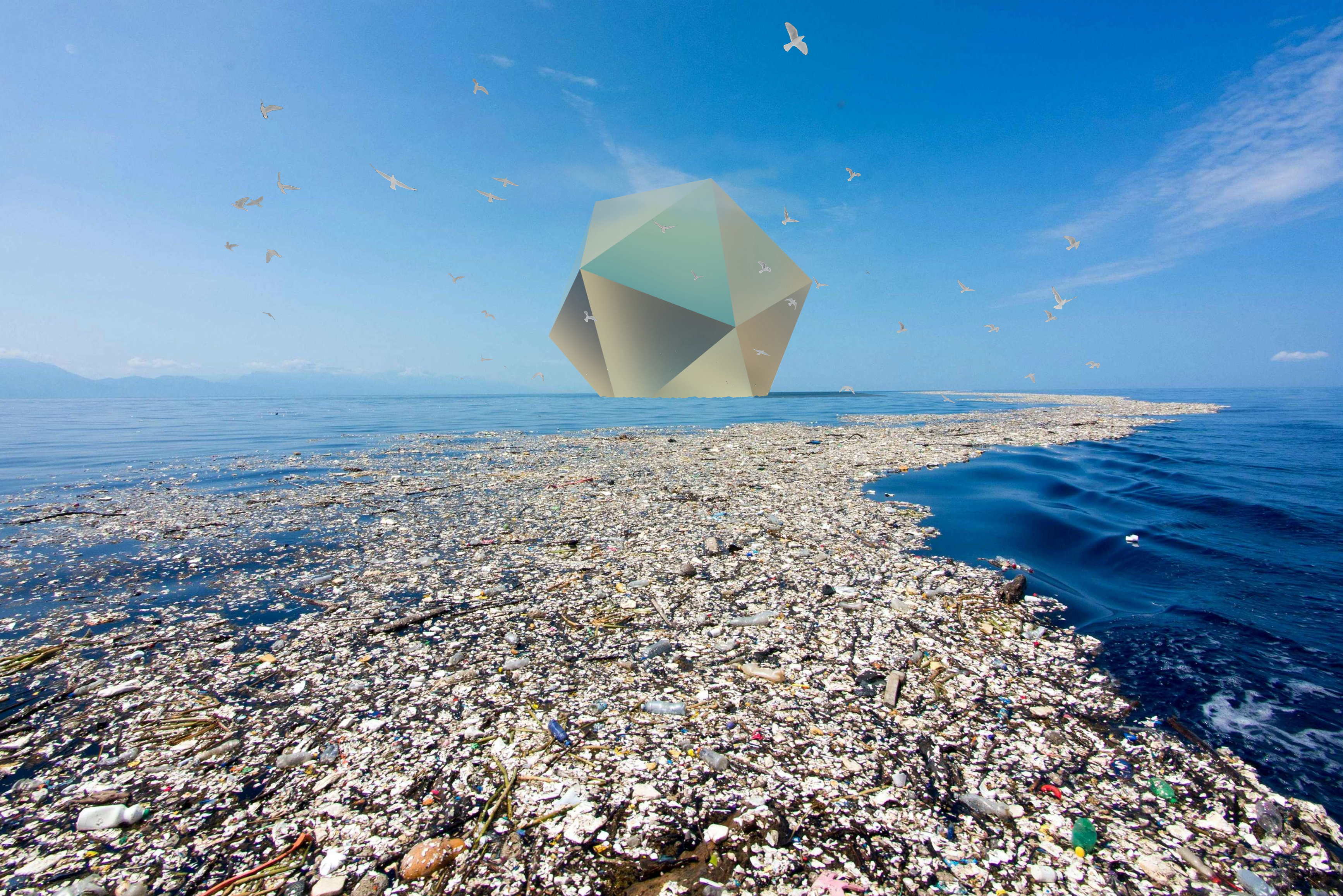
Program Museum for climate action
Team Valerio Franzone, Linda Schilling Cuellar, Dawn Han
Client Reimagining Museums for Climate Action
Location Earth
Year 2020
MANIFESTO
Stop! We are at a crossroads. The neoliberal exploitation economy, the subsequent climate crisis, and social inequality have pushed our planet to a tipping point. To reinterpret museums as new public typologies is a key: a platform to bring human and non-human entities together to collaborate on creating new world-making plans, alternative systems that are not rooted in anthropocentrism.
The Cooperative for Environmental Consciousness and Alternatives challenges the limit of museums where the exhibits are often far removed in time and places from their original contexts, by recontextualizing the museum, its exhibits, and its functions as one to carry out its purpose, the mission to restore the Earth’s natural and social balance. The CECA is a body of networks that re-links the human race to the core of its terrestrial existence. By re-establishing an intimate relationship between the planet and its inhabitants, it reminds us that the fate of Earth is the essence of humanity, even beyond the urgency to overcome our climate crisis. The CECA is also a system, a process, a machine that helps us to envision and achieve better alternative futures through various sustainable developments.
CECA units are icosahedrons that travel the world to monitor the health of the planet and to rebalance the environment. Each icosahedron envelops processes and systems made of nature, humanity, and technology, summarizing the complexity of the planet that can be visually retraced on the interior of the structure during a visit inside the icosahedron. The units are scalable and made specifically to answer the crisis environments are facing: a massive correcting device in polluted scenarios, whereas in virgin ecosystems, the icosahedron diminishes in size to act just as a sensorial system to monitor the environment as a precautionary measure.
The CECA is a network of Icosahedrons comprised of many different, natural environments, communities, raw data, technologies, and researches. It is an extensive network that weaves around the globe to identify environmental crises, to raise awareness of such crises, and to call for solutions. Through the icosahedrons, the network can research and take action to fight climate change by environmental monitoring and healing, developing sustainable energies and agriculture, and knowledge sharing. The CECA network provides a social platform where participants can share their experiences and data, opening up dialogues on the repercussions of capitalism on Earth. As a result, the participants can rethink their responsibilities, roles, and duties to the communities most affected by the crisis. This multi-way exchange within the CECA network enriches all participants with new and different perspectives through communication, education, and participation.
The COVID-19 pandemic has forged a short pause on our mindless consumption way of life and lets our planet to catch a quick break from enduring our wants and our industries. Yet, why aren’t we treating the climate crisis with the same urgency as finding a cure or vaccine against a disease outbreak? The planet we’re inhabiting is killing us with our wrong-doings. It’s time to act. It’s time to set aside the Capitalocene lens that obscures our sights and minds. It’s time to advocate for nurturing strategies and innovations that will save both us and our planet. It’s time we see the planet’s needs as our own needs and find a way out together. It’s time to connect.
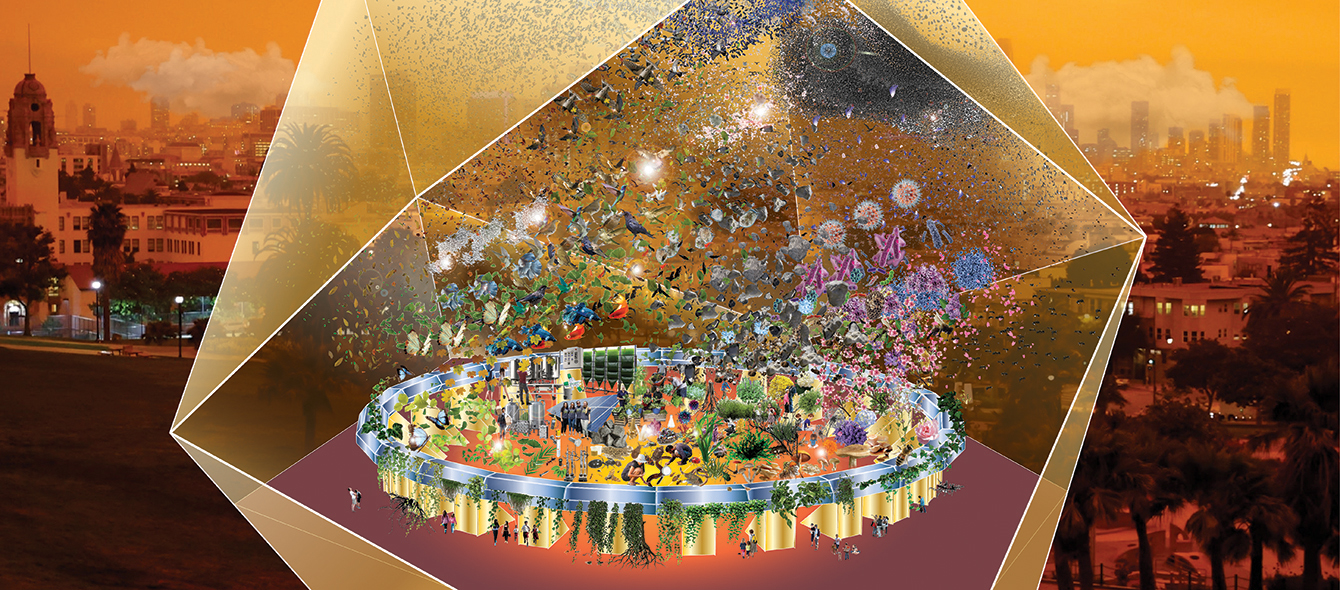

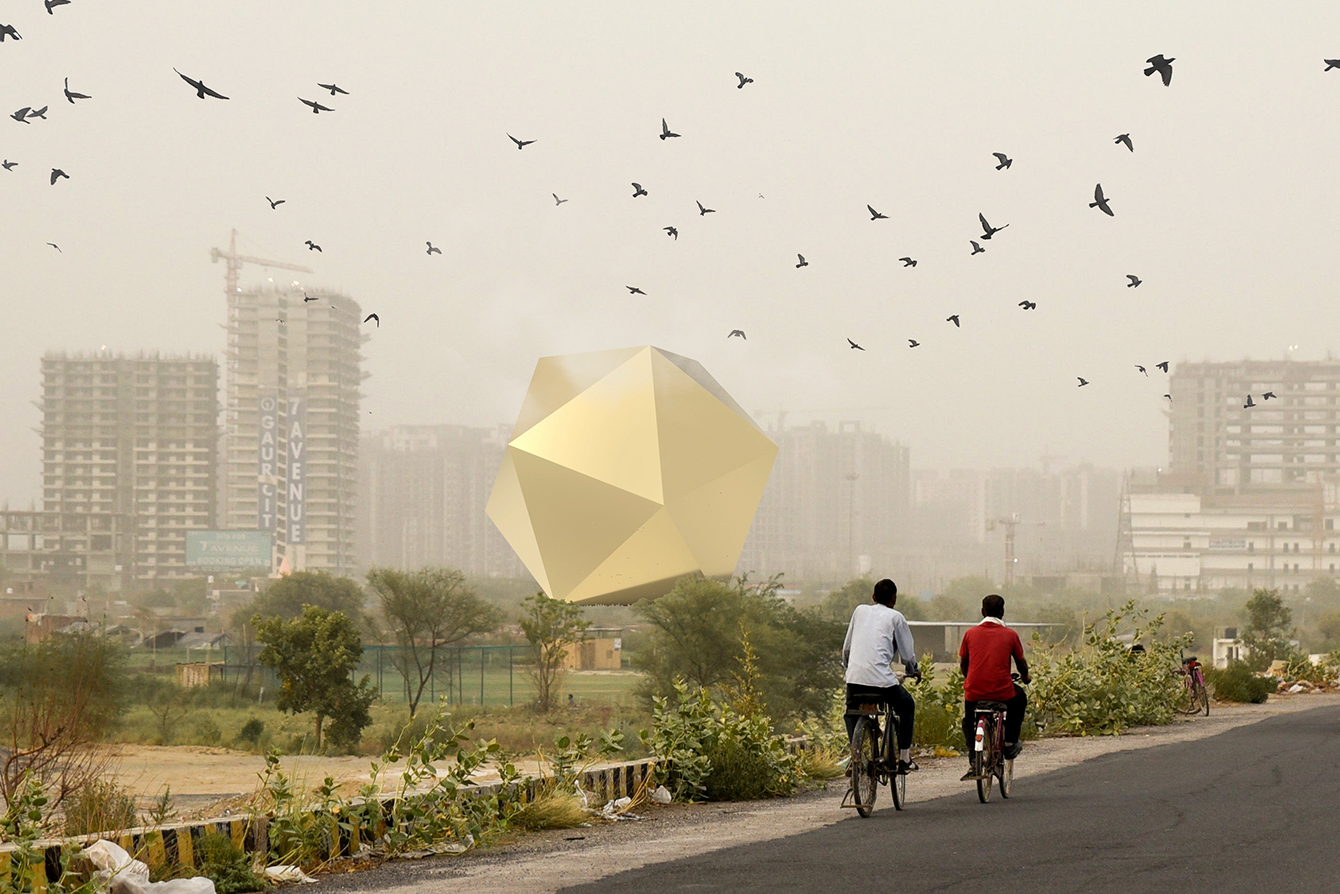
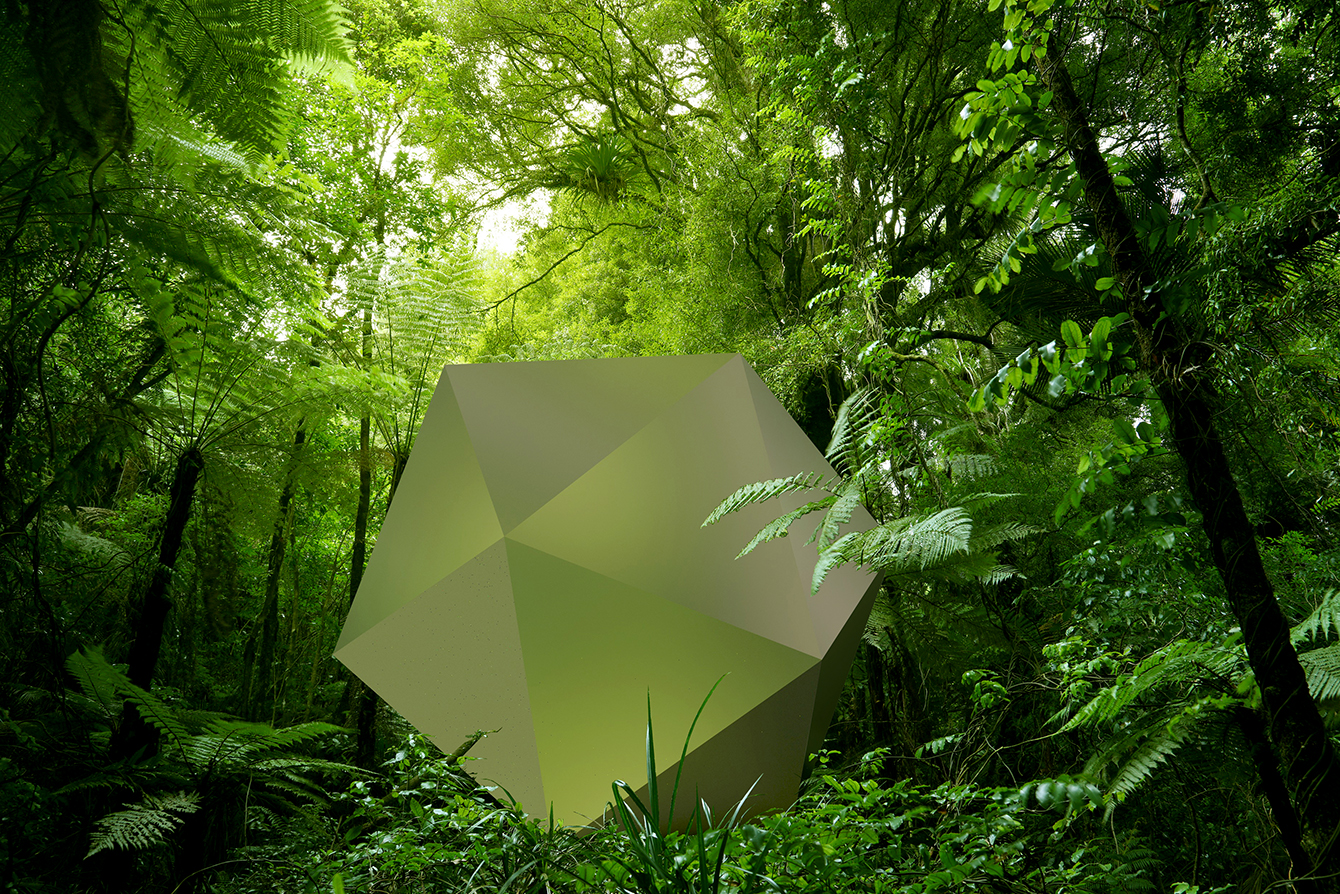

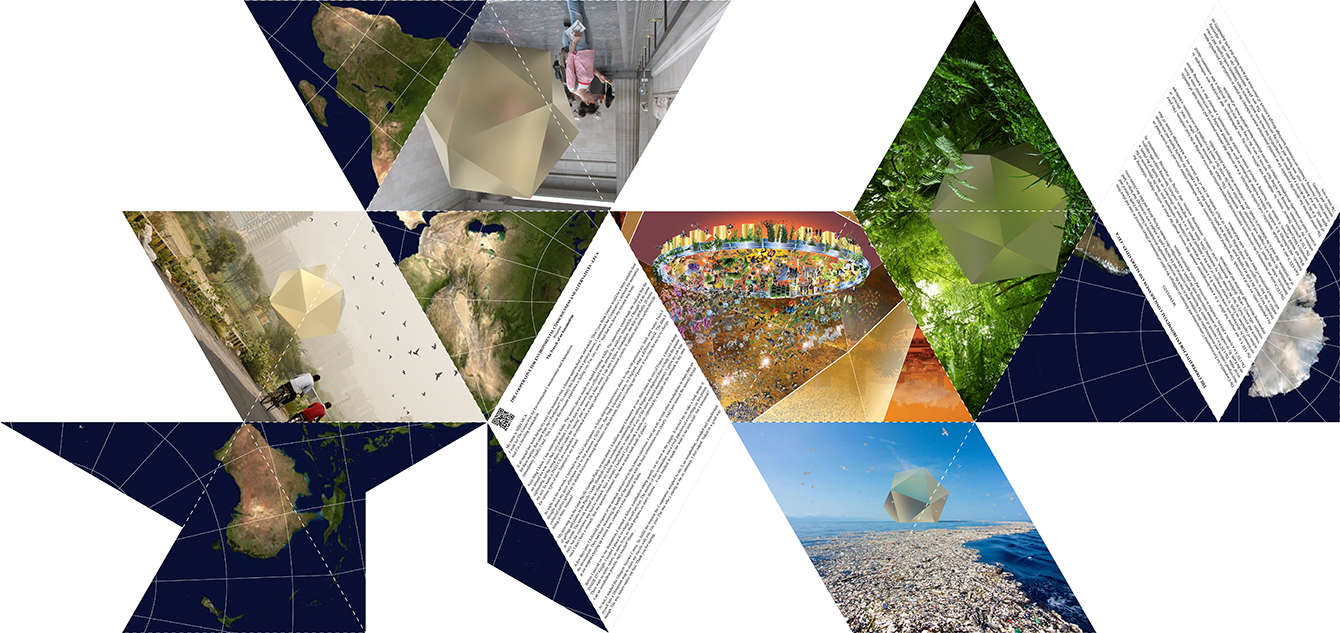
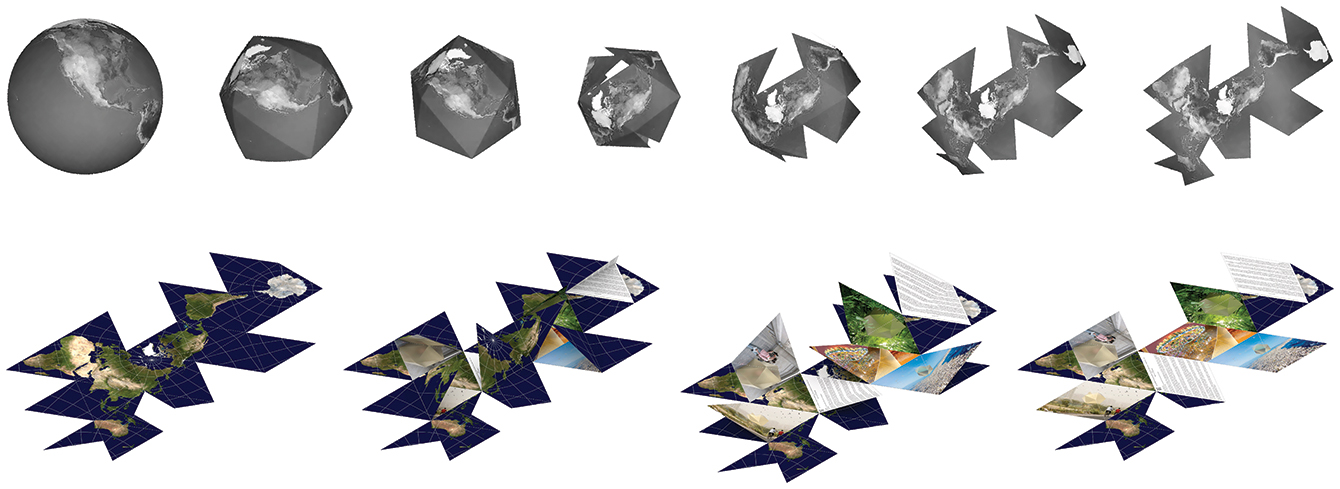
CECA
presents
The Travels of an Icosahedron
presents
The Travels of an Icosahedron
My name is MISS.MCA.
I work for The Cooperative for Environmental Consciousness and Alternatives.
And I’m a traveling icosahedron.
It all started last week during my very first museum visit, a human approached me and asked, “Don’t you think Greece would be a more suitable host for these marbles that came from their Parthenon?” To satisfy this human with a perfect answer, I summoned the Cooperative’s network for assistance immediately. Finally, I said, “Yes, I can see this museum experience is failing you. I’m very sorry.” And that was how my mission was born.
Next thing I knew, I was somewhere in India. The sensory device inside me started chirping wildly. The obnoxious sound made me realized that the air around me was very bad, very polluted. I sent the data my sensory device collected to the network for analysis. Meanwhile, I thought I’d do some sightseeing, but the smog there didn’t make the “seeing” part so easy. On a busy street, I ran into a fellow icosahedron, one that is probably 20 times my size. Its name is IND.CCS, an icosahedron incorporated with a large carbon control and sequestration system. It captures and stores carbon dioxide for various types of uses. Impressive, my friend.
At night, on the network, I listened to the local participants in India sharing experiences about living with polluted air, land, and water. Then I thought about my quiet afternoon visit to the museum a little less than 7000 kilometers away in England, what a different world. The data I collected earlier ignited an in-depth discussion among the humans on the network, but I was running out of power. It was time for me to re-charge. Hang in there, humans!
My next stop was the Great Pacific Garbage Patch, an area about 1.6 million square kilometers in size, three times the size of France, a massive dump of garbage and plastic in the Pacific Ocean. Hundreds of huge Icosahedrons containing plastic-eating fungus were deployed there to help rid the plastic in the ocean. The network wanted me to check on my fellow icosahedrons to make sure if any of the units required maintenance. I guess my job was easy, but the experience was hard to stomach. Wait a minute! I believed I just mistook a sentiment expressed by a human on the network as my own since I don’t have a stomach. But my question remained: why was so much trash made of plastic?
A few days later, I followed the request of the network and arrived in the Amazon rainforest. I met up with several other icosahedrons to share data on the environment. They had been monitoring the health of the rainforest with the local communities very closely. And I just noticed the sensory device in me stopped chirping up a storm here, contrary to what happened in India.
Before I moved on to my destination, I spotted a fellow icosahedron sitting quietly on its own in the jungle. It invited me to take a look inside it. INSIDE IT? Alright. I needed a place to re-charge myself anyway. The interior of this icosahedron was a vivid depiction of everything on this planet. There were so many colors, so many lives, so much progress, so many dreams… I was touched. It made me want to be terrestrial! Am I terrestrial? Can an icosahedron possibly feel touched? Hmm…
At last, I reached the Glasgow Science Centre. To fulfill the mission the Cooperative assigned to me, I, an icosahedron, unfolded and transformed myself into a Dymaxion map to share my travels with you. Yes, you! The one who’s staring at me so intensely. I feel naked. Naked in a good way though. The way nature makes me feel. Thank you for staring.